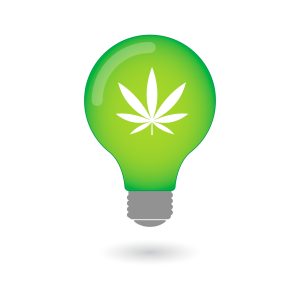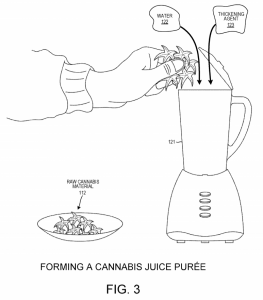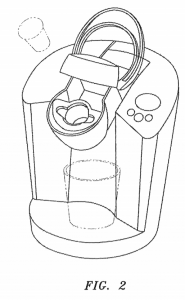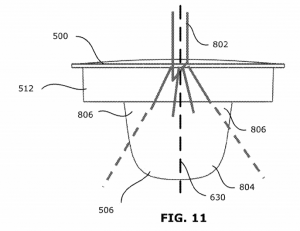“Last year, Reuters reported that the USPTO issued 39 patents containing the word cannabis during 2018 through late November. The USPTO only issued 29 such patents during 2017 and 14 during 2016.”
 The shifting status of marijuana from an illegal controlled substance to regulated medicinal product to, in some jurisdictions, legalized recreational activity has created a market that promises to be incredibly valuable in the years to come. An April 2018 report from Grand View Research predicted the global market for legal marijuana products to exceed $146 billion by the year 2025. A 2018 cannabis report by Deloitte forecast Canada’s cannabis market to reach $7.17 billion in total sales during 2019, including $4.34 billion in sales of legal marijuana products. In the U.S., 2017 sales of legal recreational and medicinal marijuana products resulted in revenues of up to $6.6 billion, a fraction of the estimated $50 billion to $55 billion of total U.S. demand for recreational cannabis products.
The shifting status of marijuana from an illegal controlled substance to regulated medicinal product to, in some jurisdictions, legalized recreational activity has created a market that promises to be incredibly valuable in the years to come. An April 2018 report from Grand View Research predicted the global market for legal marijuana products to exceed $146 billion by the year 2025. A 2018 cannabis report by Deloitte forecast Canada’s cannabis market to reach $7.17 billion in total sales during 2019, including $4.34 billion in sales of legal marijuana products. In the U.S., 2017 sales of legal recreational and medicinal marijuana products resulted in revenues of up to $6.6 billion, a fraction of the estimated $50 billion to $55 billion of total U.S. demand for recreational cannabis products.
Although Canada fully legalized both the recreational and medicinal use of marijuana last October, marijuana legalization is occurring more slowly and piecemeal in the United States. In the U.S., marijuana is still a Schedule I drug under the Controlled Substances Act, although medicinal use is legal in 33 states plus the District of Columbia and recreational use has been legalized in 10 states and Washington, D.C. However, even these slow moves in the direction of full legalization have galvanized inventors filing patent applications on cannabis-related inventions with the U.S. Patent and Trademark Office (USPTO). Last year, Reuters reported that the USPTO issued 39 patents containing the word cannabis during 2018 through late November. The USPTO only issued 29 such patents during 2017 and 14 during 2016.
Increased research and development expenditures among major cannabis producers are another indication that marijuana’s gradual legalization is spurring cannabis innovations. Canadian cannabis firm Canopy Growth indicated in its second quarter earnings report for 2019’s fiscal year that the corporation spent $1.94 million CDN on research and development for the quarter, a major increase from the firm’s $494,000 in R&D expenditures during Q2 2018. Similarly, Edmonton-based Aurora Cannabis reported that it spent $3.43 million CDN on R&D during the first quarter of 2019, up from $107,000 CDN during Q1 2018. Aurora also identified $2.35 million CDN in patent-related acquisitions since the end of July 2017.
Perspectives from Industry Insiders
Legal professionals in this realm are optimistic about the prospects for cannabis inventions, especially given the early stages of development in many cannabis sectors. Howard Cohn, chief patent attorney and managing partner at THC Legal Group, which is a cannabis-focused specialty division of Howard M. Cohn & Associates, said that, as the market for cannabis grows, he expects the push to obtain market share through patent holdings will only increase. “My gut feeling is that inventors will spend more time developing proprietary ways to integrate cannabis extracts into existing products and far less time attempting to obtain patents on unique strains of genetically engineered cannabis.” Cohn added that the food and beverage industry “is a natural partner for the cannabis space and will likely experience an explosion of innovation vis-à-vis cannabis oils. Cannabis enthusiasts should expect to see great advances in cannabis infusions and a variety of clever engineering moves designed to maximize the potency of the end-product with the least amount of raw cannabis material,” he said.
Michael Brubaker, patent attorney with Cannapatents, likened patenting activities in the cannabis industry to those occurring in blockchain technologies. “Those are two breakout industries that have these areas where you can grab broad patents and license them to companies that will hopefully come into the market in the next few years,” he said. “The broader the patent, the better the patent.”
One issue that has acutely affected the world of cannabis patents is a lack of available prior art, which has allowed some patent applicants to obtain patent claims that would otherwise be anticipated or obvious over the prior art. This is due in part to marijuana’s legal status discouraging publication of cannabis-related innovations by inventors who don’t want to attract the attention of federal law enforcement. Brubaker acknowledged that prior art issues have affected the industry. “A patent examiner only has so much time to search for prior art on each patent application,” he said. “They’ll definitely do a search of patent and patent application databases, and may even do a quick Google search, but it’s possible in the cannabis field that they may not find something that everyone else knows is pretty common in the art. If the examiner doesn’t find it, then there’s no rejection based on the prior art.”
Recently Granted Cannabis Patents
Oral Care Composition Comprising Cannabinoids
U.S. Patent No. 10172786, issued on January 8 of this year and assigned to AXIM Biotechnologies, claims a cannabinoid toothpaste composition comprising an abrasive agent, a binder, a humectant, a fluoridating agent, a surfactant, water, a thickener, cannabidiol (CBD) present in an amount from 0.1 percent to 0.5 percent by weight, and lactoferrin present in an amount from 0.1 percent to 0.5 percent by weight. The oral care composition covered by this patent, which can also come in a mouthwash solution, makes use of CBD to promote the antibacterial properties of the composition.
 Packaged Frozen Cubes of Cannabis Juice Purée with Added Decarboxylated Cannabis Material
Packaged Frozen Cubes of Cannabis Juice Purée with Added Decarboxylated Cannabis Material
U.S. Patent No. 9956174, issued in May 2018 to inventor Jeff Nordahl, claims a package comprising a plurality of frozen structures of cannabis juice purée where the structures include amounts of CBD, tetrahydrocannabinol (THC), cannabidiolic acid (CBDa) and tetrahydrocannabinolic acid (THCa) and where the purée is formed by blending leaves of a cannabis plant and the shredded leaves remain in the frozen structures of the purée. The invention, intended as a dietary supplement, provides a means for manufacturing and packaging cannabinoid products which delivers the medicinal properties of THCa and CBDa without those substances being decarboxylated through heating processes into THC and CBD.
 Method for Making Coffee Products Containing Cannabis Ingredients
Method for Making Coffee Products Containing Cannabis Ingredients
U.S. Patent No. 9888703, issued in February 2018 and assigned to Imbue LLC, claims a coffee pod consisting essentially of carbon dioxide extracted THC oil cannabis, coffee beans and maltodextrin. The invention covers methods of creating a consumable coffee drink that consistently contains about 5 milligrams (mg) to about 50 mg of THC, the primary psychoactive component of the cannabis plant.
Single Serve Beverage Pod Containing Cannabis
 U.S. Patent No. 9480647, issued in November 2016 and assigned jointly to CannTrust Inc. and Club Coffee L.P., claims the method of preparing a single-serve container configured for receipt in a single-serve brewing machine, the method involving processing cannabis by pulverizing it to a particle size of less than one millimeter (mm) and by heating it at a sufficient temperature and time period to decarboxylate cannabis, adding the processed cannabis to the single-serve container, adding an effective amount of a lipid-rich food-based extraction agent and sealing the container. This invention, which could be used with Keurig or Tassimo machines, is intended to provide the medicinal benefits of marijuana to patients who may be reluctant to smoke marijuana.
U.S. Patent No. 9480647, issued in November 2016 and assigned jointly to CannTrust Inc. and Club Coffee L.P., claims the method of preparing a single-serve container configured for receipt in a single-serve brewing machine, the method involving processing cannabis by pulverizing it to a particle size of less than one millimeter (mm) and by heating it at a sufficient temperature and time period to decarboxylate cannabis, adding the processed cannabis to the single-serve container, adding an effective amount of a lipid-rich food-based extraction agent and sealing the container. This invention, which could be used with Keurig or Tassimo machines, is intended to provide the medicinal benefits of marijuana to patients who may be reluctant to smoke marijuana.
Enhanced Smokable Therapeutic Cannabis Product and Method for Making Same
U.S. Patent No. 10172897, issued on January 8, 2019, and assigned to NC3 Systems, claims a method of preparing an enhanced smokable therapeutic cannabis product by separating hash resin from plant material of a cannabis plant, pressing the hash resin to expel oil and create spent hash resin, extracting further cannabinoids from the spent hash resin using medium chain triglyceride oil, enriching the extracted oil with purified ?-myrcene and spraying the enriched oil onto dried smokable cannabis plant matter. The invention provides more of the therapeutic effects of marijuana by addressing shortcomings in varying chemical content across different strains.
Cannabis Claims Canceled
Cannabis Plant Named Mr. Grass Weedly
U.S. Patent Application No. 20190000029, filed in July 2017 and assigned to Insectergy, LLC, claims an alimentary multifunctional composition including cannabis and insects with a CBD content ranging from 0.00005 weight percent to 15 weight percent and a THC content ranging from 5 weight percent to 63 weight percent. The composition has an insect mass ratio ranging from 25 pounds to 1,500 pounds of insects per ton of composition. The invention addresses a need for a superior blend of cannabis providing improved medicinal benefits and has a high yield to meet demand at a low price.
Brubaker said that it appeared this particular patent application was experiencing a difficult time at the USPTO given the fact that claims 1 through 151 have been cancelled. “It’s very rare for a patent application to start with 152 claims,” he said. A seventh supplemental preliminary claim amendment document posted to the Public Patent Application Information Retrieval (PAIR) image file wrapper for this patent application shows that the patent applicants have cancelled claims 1 through 247 and have proposed new amended claims 248 through 279.
Brubaker noted that it was very unusual to include the brand name of the particular marijuana strain in the title of the patent application.
Image Source: Deposit Photos
Vector ID: 34778337
Copyright: jpgon

![[IPWatchdog Logo]](https://ipwatchdog.com/wp-content/themes/IPWatchdog%20-%202023/assets/images/temp/logo-small@2x.png)

![[Advertisement]](https://ipwatchdog.com/wp-content/uploads/2024/04/Artificial-Intelligence-2024-REPLAY-sidebar-700x500-corrected.jpg)
![[Advertisement]](https://ipwatchdog.com/wp-content/uploads/2024/04/UnitedLex-May-2-2024-sidebar-700x500-1.jpg)
![[Advertisement]](https://ipwatchdog.com/wp-content/uploads/2024/04/Patent-Litigation-Masters-2024-sidebar-700x500-1.jpg)

![[Advertisement]](https://ipwatchdog.com/wp-content/uploads/2021/12/WEBINAR-336-x-280-px.png)
![[Advertisement]](https://ipwatchdog.com/wp-content/uploads/2021/12/2021-Patent-Practice-on-Demand-recorded-Feb-2021-336-x-280.jpg)
![[Advertisement]](https://ipwatchdog.com/wp-content/uploads/2021/12/Ad-4-The-Invent-Patent-System™.png)






Join the Discussion
3 comments so far.
Anonymous
February 21, 2019 04:01 pmWhy are claims to a cannibas plant filed by Insectergy, LLC even directed to patentable subject matter? I can see the machines could be directed to any plant. Shouldn’t a process or composition of matter to cannibas be barred under 35 USC 101? I have seen trademarks refused on such grounds when the description of goods includes cannibas.
Wayne Carpenter
February 20, 2019 10:02 pmI thought I would mention that I am concerned about the increasing use and negative aspects of marijuana for the following reasons:
• The misuse of the psychotropic attributes of the plant, which have been attributed to an increase of vehicle accidents and associated negative health issues—more information is presented below concerning health concerns.
• The skunk like odor from marijuana grows in the area.
• I understand that there is a land value issue where nearby land is lowered in value with potentially criminal activity increasing. See the following link: http://www.articlesfactory.com/articles/finance/damage-from-a-grow-house-can-be-irreparable.html
There are health issues which tend to be covered up as a result of people not wanting facts about marijuana use to be known. After reading the information below, how could anyone ignore the negative issues concerning marijuana use—but they might because they don’t care or that there is too much money involved—money blinds people.
https://www.cbsnews.com/news/2-million-u-s-teens-are-vaping-marijuana-report-finds/
https://www.cbsnews.com/news/dea-chief-says-smoking-marijuana-as-medicine-is-a-joke/
https://abovetheinfluence.com/drugs/marijuana/#facts
https://www.azcentral.com/story/opinion/op-ed/2015/06/15/safe-pot-tell-kids-died/71267330/
https://www.amenclinics.com/blog/amen-research-marijuana-affects-blood-flow-brain/
https://www.amenclinics.com/blog/largest-brain-study-of-62454-scans-identifies-drivers-of-brain-aging/?trk_msg=FO1ESEDHOKGKTA9FH32663BGOG&trk_contact=TTD31F5HN28G975A2P6CS28FM0&trk_sid=TJJ5FF8NC54A8GN8CFST4VUG30&utm_source=ACI-Listrak&utm_medium=Email&utm_term=READ+MORE&utm_campaign=Monday+Send
Mark Nowotarski
February 20, 2019 10:28 amSteve,
Thanks for covering this. As might be expected, China is filling Cannabis patents at 5 times the rate of the US. Anyone inventing in this area would do well to do a thorough prior art search of the Chinese patent literature.